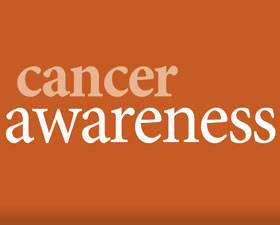Living With Cancer
Pets affected by secondhand smoke, too
 Lighting up a cigarette may not just hurt yourself and the people around you. Your pet may be paying the price for your habit, too.
Lighting up a cigarette may not just hurt yourself and the people around you. Your pet may be paying the price for your habit, too.
Veterinarians say that secondhand smoke is a threat to dogs and cats as well as humans. Secondhand smoke, also known as environmental tobacco smoke, or ETS, is a mixture of the smoke given off by the burning end of a cigarette or cigar and the smoke that is exhaled by the smoker. Research indicates that secondhand smoke contains more than 5,000 substances, many of which are known to cause cancer in humans and other animals.
» Read More
Did you know?
Although cervical cancer may garner the headlines and be the primary reason thousands of women visit their doctors each year for routine PAP tests, this cancer is not the most common cancer of the reproductive organs. Cancer of the uterus is more common than cervical cancer and ovarian cancer. The National Cancer Institute says that more than 47,000 women will be diagnosed with uterine cancer in the United States in 2012 alone.» Read More
What is esenchymal chondrosarcoma?
Certain cancers are better known than others, and that name recognition might earn them more funding for research. With more than 100 different types of classified cancers, there are many that the public has never heard of. Mesenchymal chondrosarcoma, an extremely rare cancer of the cartilage, is among those cancers the general public knows very little about. Mesenchyme are embryonic cells from which cartilage is formed. Chondrosarcoma is a form of bone cancer that arises from cartilage cells.» Read More
Laser therapy is another tool used to fight cancer
 Cancer patients are well-versed in treatment options, with chemotherapy, radiation and surgery generally at the forefront of their treatment plans. They are also very aware of the side effects of those treatments, some of which include pain, nausea, hair loss and fatigue. New advancements in laser therapy may help to change the way doctors choose to treat cancer.
Cancer patients are well-versed in treatment options, with chemotherapy, radiation and surgery generally at the forefront of their treatment plans. They are also very aware of the side effects of those treatments, some of which include pain, nausea, hair loss and fatigue. New advancements in laser therapy may help to change the way doctors choose to treat cancer.» Read More
Cancer staging helps indicate prognosis
 As frightening as cancer can be, evidence indicates that the survival rate for most cancers is increasing and that many are beating the odds against this potentially devastating disease. Although it can be difficult to pinpoint just how "dangerous" a specific cancer case may be, a universal method of staging classification helps patients understand the severity of their cancers and their prognosis.
As frightening as cancer can be, evidence indicates that the survival rate for most cancers is increasing and that many are beating the odds against this potentially devastating disease. Although it can be difficult to pinpoint just how "dangerous" a specific cancer case may be, a universal method of staging classification helps patients understand the severity of their cancers and their prognosis.» Read More
Pituitary tumors more common than you might think
Though few pituitary tumors are cancerous, the number of pituitary tumors diagnosed each year may be far lower than their actual number. According to the American Cancer Society, roughly 7,000 pituitary tumors are diagnosed each year, and nearly all of those are benign, or non-cancerous. However, doctors have discovered that pituitary tumors are more common than once thought.» Read More
Tips for long-distance caregivers
 Caring for a friend or family member who has cancer is not easy. It may only get more difficult when a caregiver lives far away.
Caring for a friend or family member who has cancer is not easy. It may only get more difficult when a caregiver lives far away.
Long-distance caregiving may not be ideal for the patient or the caregiver, but it's sometimes the only option. Long-distance caregivers can expect their out-of-pocket expenses to be higher, as the cost of travel alone is likely to be considerable. While long-distance caregiving may not be ideal, the American Cancer Society offers the following tips to help men and women entrusted with caring for a cancer-stricken friend or family member from afar.
» Read More
Did you know?
According to the National Cancer Institute, nearly 12 million Americans with a history of cancer were alive in January 2008. That includes people who were cancer free as well as those who still had traces of cancer and those receiving treatment.» Read More



